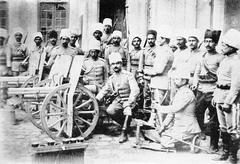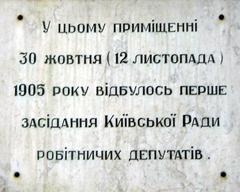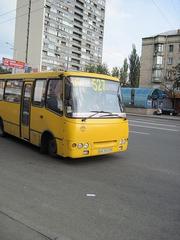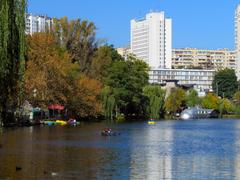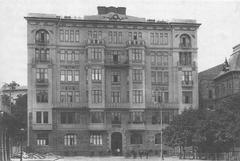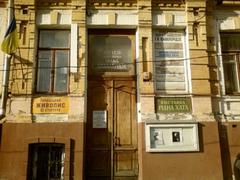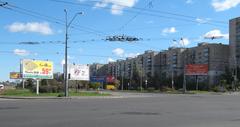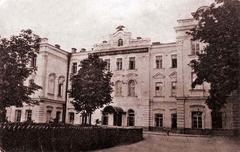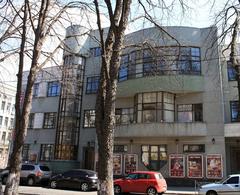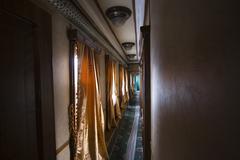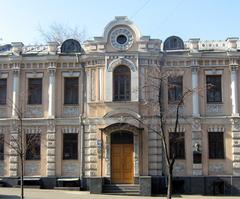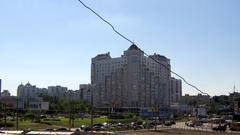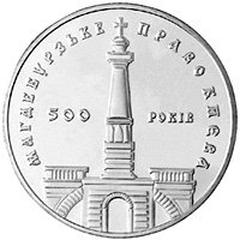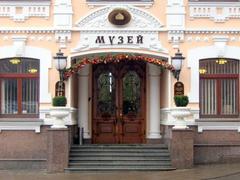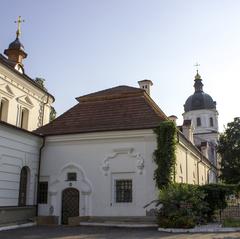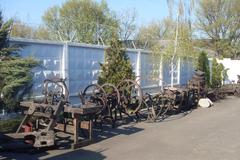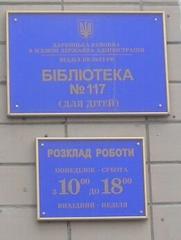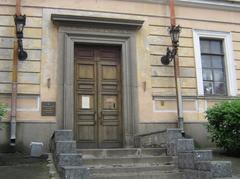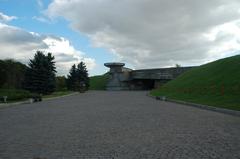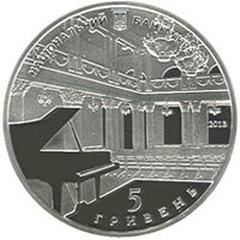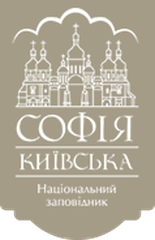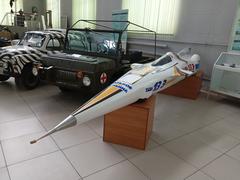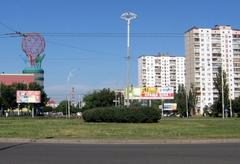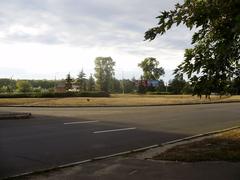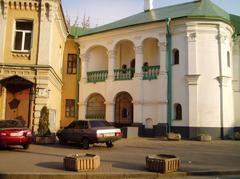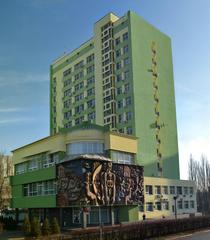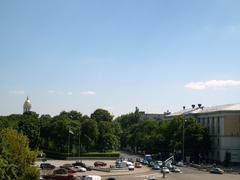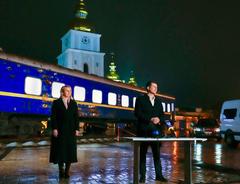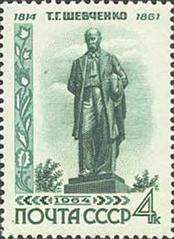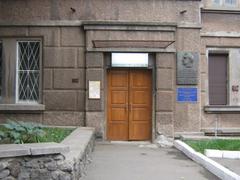Sundial of the Kyiv-Mohyla Academy: Visiting Hours, Tickets, and Complete Guide to Kyiv’s Historical Landmark
Date: 04/07/2025
Introduction
The Sundial of the Kyiv-Mohyla Academy stands as a unique confluence of history, science, and culture within one of Eastern Europe’s oldest and most prominent academic institutions. Located in Kyiv’s historic Podil district, this late 18th-century sundial is not just an artifact of scientific advancement but also a symbol of the Academy’s enduring legacy in Ukrainian education and intellectual life. This comprehensive guide offers everything you need to know about the sundial’s history, architectural and scientific significance, practical visiting information, and its place among Kyiv’s historical treasures (Kyiv-Mohyla Academy History).
Historical Context of the Kyiv-Mohyla Academy and Its Sundial
Founded in 1615, the Kyiv-Mohyla Academy quickly evolved into a major center of learning, attracting students from across Eastern Europe (Kyiv-Mohyla Academy History). The sundial, crafted by Pierre Brullion, a French mathematics professor, was installed during the Academy’s Baroque expansion in the late 18th century as a teaching tool and a symbol of Enlightenment-era values. Designed with a brick pedestal and a column featuring four dials facing the cardinal directions, it enabled students to observe solar time and apply principles of astronomy and mathematics (Virtual Museum of Kyiv-Mohyla Academy). Its placement near the house of Halshka Hulevychivna, the Academy’s benefactress, further highlights its roots in the institution’s foundational mission (Discover Ukraine).
Architectural and Scientific Features
Design and Craftsmanship
The sundial is an outstanding example of 18th-century scientific instrumentation, combining functional accuracy with decorative elements characteristic of Ukrainian Baroque and early Neoclassical architecture. The dial plate, crafted from durable local stone or stucco, is inscribed with hour lines, and the metal gnomon is precisely angled to Kyiv’s latitude (~50.45° N) (Alamy). Its location maximizes sunlight exposure, ensuring its reliability as a timekeeping device.
Scientific and Educational Role
The sundial was central to the Academy’s curriculum during the Enlightenment, providing hands-on experience in astronomy, mathematics, and the natural sciences (shukai.com.ua). Students learned to calculate local solar time, deepening their understanding of celestial mechanics and the scientific method at a time when mechanical clocks were rare. The sundial’s design and use reflect the Academy’s broader educational philosophy, emphasizing the fusion of theoretical knowledge with practical application (wikiwand.com).
Cultural Significance and National Identity
Beyond its educational function, the sundial is a protected cultural monument listed in the State Register of Monuments of History and Culture under the “Brotherly Monastery” designation (Virtual Museum of Kyiv-Mohyla Academy). The Academy’s integration of Orthodox religious teachings with humanities and sciences fostered an intellectual environment instrumental in shaping Ukraine’s cultural and national identity (visitukraine.today). The sundial remains a daily reminder of the Academy’s commitment to knowledge and the advancement of Ukrainian society.
Restoration, Preservation, and Contemporary Use
The sundial has survived periods of neglect, particularly during the Soviet era, thanks to significant restoration campaigns in 1970 and 2012 (Virtual Museum of Kyiv-Mohyla Academy). Supported by public fundraising and state protection, these efforts have preserved the sundial’s inscriptions and structural integrity, ensuring it remains a valuable educational resource. Today, it continues to serve as a teaching tool for students of all ages and a focal point for campus life (readingkyiv.net; kpi.ua).
Visiting Information
Location
- Address: 4 Hryhorii Skovoroda Street, Podil district, Kyiv
- Nearest Metro: Kontraktova Ploshcha station (Kyiv city guide)
Visiting Hours
- Open to visitors daily from early morning until dusk; optimal viewing is during daylight hours for the sundial’s functionality.
Tickets and Admission
- Admission: Free for self-guided visits to the campus courtyard.
- Guided Tours: Available in Ukrainian and English through the university’s Historical and Museum Centre. Tours include the sundial and other campus highlights; book in advance (NaUKMA campus info).
Accessibility
- The campus and sundial area are mostly accessible to visitors with mobility challenges, though some historic areas may feature uneven surfaces.
Photography and Etiquette
- Photography is encouraged. Please respect the academic environment, especially during classes and events.
Enhancing Your Visit
Best Time to Visit
- Visit on sunny days, particularly in spring or early autumn, for the best viewing experience and lively campus atmosphere.
Integration with Campus Life
- The sundial is a living part of the Academy’s daily rhythm, popular among students for gathering and study. Occasional university events, performances, and celebrations take place in the sundial’s vicinity.
Nearby Attractions
- Old Academy (Mazepa) Building: Exemplifies Ukrainian Baroque architecture.
- Annunciation (Congregation) Church: Historic 18th-century church.
- Halshka Hulevychivna House: A 17th-century campus landmark.
- Local Libraries and Archives: Some open to visitors for research and exhibitions.
- Podil District: Explore Kontraktova Square, the National Museum of the History of Ukraine, St. Andrew’s Church, and the vibrant artisan quarter (Mapcarta).
Amenities
- Cafeterias and coffee shops are available on campus.
- Restrooms and seating can be found across campus grounds.
Visitor Tips
- Language: Bilingual signage (Ukrainian and English) is present; many students speak English.
- Safety: The campus is safe, but standard travel awareness is recommended.
- Dress Code: Modest dress is advised when entering churches.
- Souvenirs: Visit the campus bookstore for Academy-themed items.
Frequently Asked Questions (FAQ)
Q: What are the sundial’s visiting hours?
A: The site is open from morning until dusk daily; the best experience is on sunny days.
Q: Is admission free?
A: Yes, there is no fee for self-guided visits; guided tours may have a nominal charge.
Q: Are guided tours available?
A: Yes, in both Ukrainian and English; check with the university’s museum center for scheduling.
Q: Is the site accessible for visitors with disabilities?
A: Mostly yes; some historic areas may require extra caution due to uneven surfaces.
Q: Can I take photos?
A: Yes, photography is allowed and encouraged.
Q: What else can I see nearby?
A: The Podil district is rich with historical sites, including the Mazepa Building, Halshka Hulevychivna House, and Kontraktova Square.
Plan Your Visit
To make the most out of your trip, consider downloading the Audiala mobile app for interactive maps, audio tours, and up-to-date event information. The university’s official website and social media channels provide additional resources and event updates.
Conclusion
The Sundial of the Kyiv-Mohyla Academy is a testament to the Academy’s pioneering role in Enlightenment-era science and the enduring spirit of Ukrainian education. Free to visit and set within a vibrant academic community, the sundial is both a historic monument and a living piece of Kyiv’s cultural landscape. Whether you are seeking a deep dive into history, a hands-on science lesson, or simply a picturesque spot in the heart of Kyiv, the sundial welcomes you to explore and connect with centuries of academic tradition.
References and Further Reading
- Kyiv-Mohyla Academy History
- Virtual Museum of Kyiv-Mohyla Academy
- Discover Ukraine – Kyiv-Mohyla Academy
- Shukai.com.ua – Brulions Watch
- Wikiwand – Kiev Mohyla Academy
- Reading Kyiv – Kyiv-Mohyla Academy Sights
- TripMyDream – Undiscovered Kyiv
- Alamy
- Mapcarta
- Kyiv city guide
- NaUKMA campus info
- VisitUkraine.today
- kpi.ua
